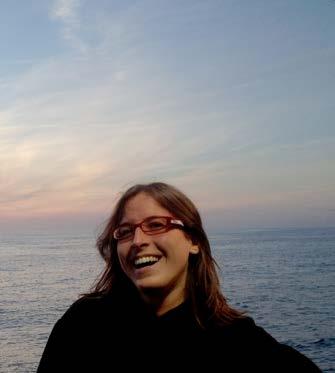
2 minute read
NEW GRANTS
£2m Project Will Assess the Impact of Offshore Wind Farms on the Ecosystem
School of Ocean Sciences Dr Katrien van Landeghem is leading a new £2m ECOWindACCELERATE research project.

The research will identify opportunities that benefit the conservation of species and biodiversity net gain around windfarms formed from seabed fixed wind farms. It will also support windfarm developers in the design their environmental monitoring strategies which go on beyond the lifespan of this project.
ECOWind-ACCELERATE is a four-year project funded by the Natural Environment Research Council (NERC), the Crown Estate and the Department for Environment, Food and Rural Affairs (Defra).
With offshore wind farms developing at an accelerated schedule under fast-track plans to switch away from fossil fuels and the cumulative effects of climate change, it is critical that we understand the impact of seabed fixed wind turbine foundations in modifying the seabed.
The seabed supports ecosystems that deliver a wide range of services, providing us with seafood, material for aggregates, storing carbon, recycling nutrients and protecting our coastlines for example.
When natural currents in the sea deviate around the wind turbine foundations or anchors, the forces on the seabed enhance, making sediments move and stay in suspension. This can change the shape and sediment composition of the seabed, alter the location of fish preyed on by seabirds and reduce the clarity of the water, potentially affecting areas far beyond the infrastructure. The climate crisis will exacerbate this, and it will extend to coastal zones, as future storm waves and rising sea levels will alter the ways energy from the sea is transferred to the seabed.
All these changes combined can have a wide-reaching effect on organisms that live on or in the seabed, potentially changing biodiversity (species richness) and the delivery of some of these ecosystem services. Consideration should also be given to the aggregation of fish strongly associated with particular seabed properties. If displaced, an impact on the food chain would be observed, as seabed-dwelling fish are consumed by seabirds and cetaceans.
During this pivotal time of energy transition and national security, it is important to understand and unlock the potential of the marine environment solution for a renewable energy transition whilst at the same time safeguarding the ecosystem. The Project lead Katrien Van Landeghem explains:
“We will test, model, observe and compare the differences on the seabed where no windfarms are present, where small windfarms are in place and where large windfarms are soon to be built. We will use the natural and laboratory environment to test all these scenarios with the wind farm developers. We will be looking at the way animals use the seabed today and in the past, and will then predict how animals will use the changed seabed in the future. Some animals might be affected negatively, some positively. We will look at how seabed habitats change and how they are used via video images, samples and soundwaves. The seabirds will be tracked with GPS to understand how they spend their energy when foraging for food near the seabed and DNA analyses of their faeces will reveal their diet.”
The new project is led by Katrien Van Landeghem and with colleagues James Waggitt, Line Cordes, Martin Austin and Stuart Jenkins with Chris Unsworth, Vahid Seydi, Noel Bristow, Dave Mills, Ben Powell and Karen Tuson providing technical and clerical support.
The project also involves partners from the National Oceanography Centre, HR Wallingford, University of Liverpool, JNCC, RSPB, and NIOZ and industry partners currently planning to use the seabed of the Eastern Irish Sea to help the Energy Transition and mitigate against the effects of the climate crisis.










